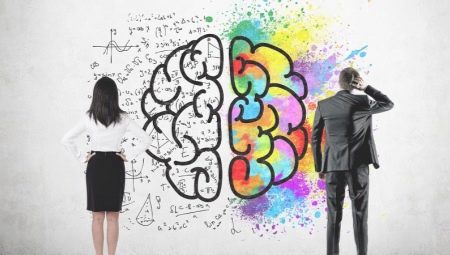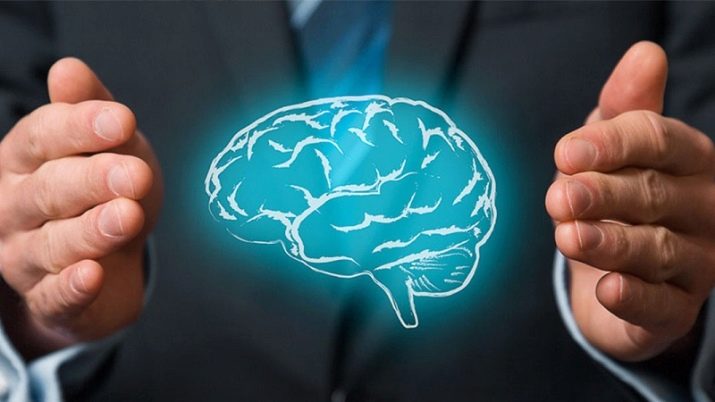Types of thinking and their characteristics

To think, think, cognize, create - nature has laid this amazing ability in each of us. From the moment of birth, the human brain begins to read information from the outside world, this is how a complex and multifaceted process of thinking starts. What is thinking? We will consider its types and their characteristics in this article.

General concept
Since ancient times, people have tried to understand what thinking is, how it originated, how it works, how this mysterious mechanism works. Scientists, philosophers tried to uncover the secrets of human consciousness and study this invisible imperceptible matter. Many treatises, books, scientific papers and articles have been written on this topic. Human thinking abilities have been studied and are still being studied by various scientific disciplines, but they remain completely unknown.... Of course, we, too, will not be able to perform a miracle and reveal the phenomenon of the human mind as such. But let's look at this concept from the standpoint of psychological science and try to understand the numerous types of thinking and their characteristics.
There are many definitions of thinking in psychology. Discussions on this issue are ongoing. There is no need to give all the examples and analyze each of them in detail.
The main thing is that the mind is a unique gift that is inherent only in humans, it is a mental process that allows us to learn about the world around us. The brain reads information from the outside, analyzes it, draws certain conclusions, based on which a person performs actions.
At the very beginning of an individual's life, the process of cognition seems simple and primitive (of course, only at first glance), but as it develops and matures, it becomes more and more complicated. The information accumulated over time makes it possible to divide and generalize, invent and reason, design and produce, create and create, create an endless variety of variations and combinations of what is happening in the world. But all these actions are based on the ability to think given to man by nature. And in psychology there is such a concept as a typology of thinking, in which it is divided into types and types, classified into different groups according to certain characteristics.

Classification
A separate subject of study in psychology is the classification and characteristics of the types of thinking. There are many illustrative tables that are full of a variety of information on this topic. In their abundance, it can be difficult to understand and understand the whole essence of this complex system. Let's try to highlight several main groups to which researchers pay special attention. Basic types of thinking:
By content
This group includes:
- visual and effective;
- visual-figurative;
- substantively effective;
- abstract logical thinking.
By the nature of the tasks to be solved
Thinking can be:
- theoretical;
- practical.

By the degree of reflection
There are such varieties:
- analytical;
- intuitive;
- realistic;
- autistic;
- egocentric.
According to the degree of novelty
May be:
- productive;
- reproductive, sometimes referred to as introverted.
By the degree of arbitrariness
There are such types:
- arbitrary;
- involuntary.

According to personal characteristics
Varieties:
- male;
- female;
- positive;
- negative;
- strategic;
- idealistic;
- irrational;
- rational;
- analytical;
- right-brain and left-brain;
- synthetic.
Scientists distinguish many more types of thinking, depending on the results of a person's activity, his mental state, worldview, perception of reality, etc.
Each of these types deserves personal attention and is considered in psychology separately, but we will consider only those indicated above.

By content
One of the varieties of rich choice, allocated by psychologists, is classified by content. This group includes visual-effective, figurative, objective-effective and abstract-logical thinking.
- Visual-Action Thinking... The individual, when faced with immediate reality, activates this type of comprehension. He focuses on the specific perception of objects. Such mental activity is characteristic of early childhood and begins to develop from infancy. A child who still does not know how to think, speak and do something like an adult, explores the world by touching objects and various experiments with them. He literally tastes the world with his teeth, gnaws at them, knocks them against each other, sometimes breaks. Thus, observing, performing certain manipulations with things, a small person studies the world and draws his first conclusions from the impressions received. In the adult state, a visual-active consciousness is characteristic of workers in the production sphere.
- Visual-figurative thinking... It is visual based. It begins to develop in children from the middle of preschool age, is dominant until the end of early school age. An adult also constantly uses visual-figurative perception throughout his life. In this case, the emphasis is on the presentation of various objects, phenomena, situations, as well as on their various transformations and transformations in the human imagination.
- Abstract logical thinking... In the course of thoughts of this nature, a person operates with abstract, abstract, non-specific concepts.This process occurs along the following chain: perception, understanding, comprehension, generalization. That is, a person, comprehending for himself the essence, meaning and significance of something, as a result creates his own individual generalized and abstract opinion about objects, phenomena, situations, independent of the rest of the members of society.
- Object-action thinking characteristic of people who for centuries have built and continue to build the entire objective world around us. They come up with ideas, translating them into reality.
These types of mind, like steps, gradually lay out the path of a person's development from the cradle to his full formation as a person.

By the nature of the tasks
Separately, psychologists describe the types of thinking abilities based on the nature of the goals and tasks performed.
- Theoretical thinking... Current laws, rules, norms, theories, concepts, doctrines - all this and much more is the product of a theoretical thought process that allows you to analyze accumulated knowledge and ideas, compare them, classify and form new ones.
- Empirical thinking - a kind of theoretical thinking. It is characterized by the same features, but under it the main role will be played by testing the hypothesis in practice, and not only in theory.
- Practical thinking... Everything is relatively simple here: the fruits of theory are used in practice, tested in action. All kinds of projects, plans, schemes, goals transform theoretical concepts into real practical reality. As a result of this type of thinking, incorporeal thought through action takes on a tangible form.

By the degree of reflection
Reflection is a look at oneself, inside oneself, deep into one's consciousness, as well as at the result of one's own actions and their rethinking.
Based on this concept, psychologists have identified another group of types of thinking.
- Analytical thinking... It is able to divide objects, phenomena, situations and problems into parts, highlighting and studying the most important of them. We observe, compare, find causal relationships, draw conclusions, find the main thing and structure large amounts of information thanks to analytical abilities. The process of such work goes on for a long time and consistently.
- Intuitive thinking to some extent it is the antipode of the analytic, as it passes quickly and unconsciously. There is no logic, no analysis, no at least some reasonable explanation for what conclusions a person's consciousness draws at the moment the intuition is triggered.
- Realistic thinking... No proof - no belief in anything. A realistic perception of reality gives a person the opportunity to think sensibly, soberly, adequately and logically. In the course of such a thought process, a person does not rely on his personal expectations and desires, he assesses the world around him only from the standpoint of reality, truth and fair criticism.
- Autistic thinkingon the contrary, he prioritizes illusory desires that seem completely correct and feasible, even if they run counter to logic. There is no critical assessment of reality in this type of perception. People of this kind of mind are often found in the artistic direction of activity and in art.
- Egocentric thinking developed in children and adults with overestimated self-esteem, excessive self-confidence, bordering on pathological narcissism. In children, this is quite normal, since they think that the world around them revolves only around them. The child's ego is at the center of the Universe, and everything that happens is perceived only from the position of the reflector "I".
For egocentric adults, such an understanding of the world and of oneself is already considered a psychological problem or an incorrigible character trait.

According to the degree of novelty
According to the degree of novelty and originality, a separate place is assigned to the creative (productive) and reproductive image of consciousness.
- Productive thinking defines a person as a creator. Here the main role is played by human fantasy, imagination. It is creative people who are capable of creating completely new ideas and previously unheard of projects. They generate an absolutely unique and original vision of the future material and spiritual objects of their labor. New concepts and images, incomparable conclusions and conclusions - all these are the fruits of the work of creative consciousness.
- Reproductive thinking - the opposite of being productive. This type of cognition is based exclusively on ready-made solutions, images, sources and templates already available in the world. The complete absence of creative imagination and focus only on the reproduction of previously acquired knowledge characterizes this type of mind. It is worth noting that people with a reproductive mindset often have introverted traits.
By the degree of arbitrariness
A group of types of thinking is distinguished according to the degree of arbitrariness.
Everything is explained here quite simply.
- Arbitrary thinking a person is controlled by consciousness and will, the thought process is completely under his control.
- Involuntary thinkingon the contrary, it exists by itself, does not obey the efforts of the will of man. Everyone is familiar with the expressions “to do it automatically”, “to do it involuntarily”, “to do it without realizing it,” and so this is the situation when involuntary thinking carries out its functions. Involuntary consciousness is associated with the affective components of a person's attitude to objects and phenomena, various situations and problems, that is, with feelings and emotional reactions to objects of the surrounding world.

Depending on personal characteristics
A large group of types of thinking is distinguished, depending on the personal characteristics of each person, which affect the predominance of one or another type of cognition and perception of the world.
- Male thinking... It is generally accepted that men think logically and straightforwardly, operate well with iconic models and systems, as a rule, this process is always aimed at action and result. Men clearly distinguish between reason and emotion. In their opinion, feelings are extremely negatively reflected in the transformation of thoughts into business results. According to one of the versions, this happens because the left-hemispheric type of perception and processing of information prevails in the brain of men. The left hemisphere is responsible for speech, logic, analysis, operations with numbers, sequences, etc. In women, in the course of working with information, the right hemisphere of the brain dominates. Right-brain cognition endows women with imagination, daydreaming, emotionality, and excellent spatial orientation.
- Female thinking has a similarity to intuitive thinking. Emotions for the fair sex are always in the first place, so often many conclusions and inferences are based on feelings and forebodings. At times, a woman's mood drives her, and her train of thought can change along with changes in her mood. This is only a description of a tendency that often manifests itself, but psychologists do not argue that women have neither logic nor rationality. On the contrary, in certain situations, women show no less than men, the ability to analyze, generalize, plan and miscalculate the situation.
- Positive thinking... This is about optimism. People with these mental traits tend to see opportunities to achieve their goals, even in spite of obstacles. Such individuals always manage to soberly, realistically, and most importantly, constructively, assess the situation and tune in to success.
- Negative thinking characteristic of pessimists. They are constantly dissatisfied with life, constantly complain about it, see insurmountable obstacles everywhere and in everything, thereby causing the pity and sympathy of others.
- Strategic thinking... If you tend to create ambitious plans and still make clear predictions, then you are a strategist. People with a strategic vision of the world are capable of adhering to a goal, effectively assessing the path to achieve it and never turning away from it - as a rule, these are successful businessmen and leaders.
- Idealistic thinking... An idealized view of the world is inherent in idealists. By creating in their imagination the ideal version of the world, they project it onto reality. As a rule, a mismatch occurs, and a person is very disappointed, refusing to accept the world as it is, imperfect and imperfect.
- Irrational thinking... Irrational people think illogically, give an incorrect assessment of phenomena and situations, cannot explain why they act in one way or another, but at the same time believe that they are doing everything right and are able to captivate others with their incomprehensible faith. It is often characteristic of schizoid disorders.
- Rational thinking... Arguments, facts, knowledge, skills, logic, reason - these are the foundations on which a person with rational intelligence relies. Emotions, feelings, experiences for such individuals do not matter. They always think sensibly and soberly, solve tasks clearly and quickly and find a constructive approach to everything.
- Analytical thinking... A human analyst studies everything that happens around him slowly, thinking over everything in detail, thoroughly, always establishing the reasons for what is happening, since not a single phenomenon and not a single situation in his understanding and perception of the world can be causeless.
- Synthetic thinking... Isolated facts, scattered data, scraps of information are not a problem for a person with such a mind. He will certainly recreate a complete and clear picture, collecting it piece by piece. And such complex operations will absolutely not scare him.


Unconscious thinking
The concept of unconscious thinking stands out in psychology. It implies the process of cognition of the surrounding world by the unconscious segment of the mind. The unconscious is absolutely beyond the control of its owner, it is not controlled and exists as if by itself. It collects and stores absolutely all information read from the outside throughout a person's life. You can compare this process with collecting the details of a designer, only this happens automatically, regardless of our desire and concentration of attention.
The information collected in the subconscious is used when the need arises.... The result of the work of unconscious thinking is these are decisions made unconsciously by a person... We think that we are acting in one way or another, because we have long and persistently searched for a logical solution in this or that situation, but we do not even suspect about the influence of the unconscious on the adoption of this decision. Like the far side of the moon, unconscious thinking is the most unexplored and most mysterious area of the human mind.
It is safe to say that it begins to develop intensively in preschool children, prevails in younger schoolchildren, and especially dominates in first-graders.

Ways to determine the type of thinking
In psychology, there are several ways to determine the type of thinking, individual style. Most often, the testing method is used for this purpose.... The tests are developed by experienced psychologists on the basis of long research, collection and systematization of information about the characteristics of each type of intelligence. One of these tests was created according to the method of the famous American psychologist, the largest researcher of cognitive processes Jerome Bruner.
There is also a methodology “Type of thinking”, developed by psychologist Galina Rezalkina, in which it is proposed to answer “yes” or “no” to a number of questions.After that, the points are calculated according to the proposed scales - it becomes clear what type a person has.









